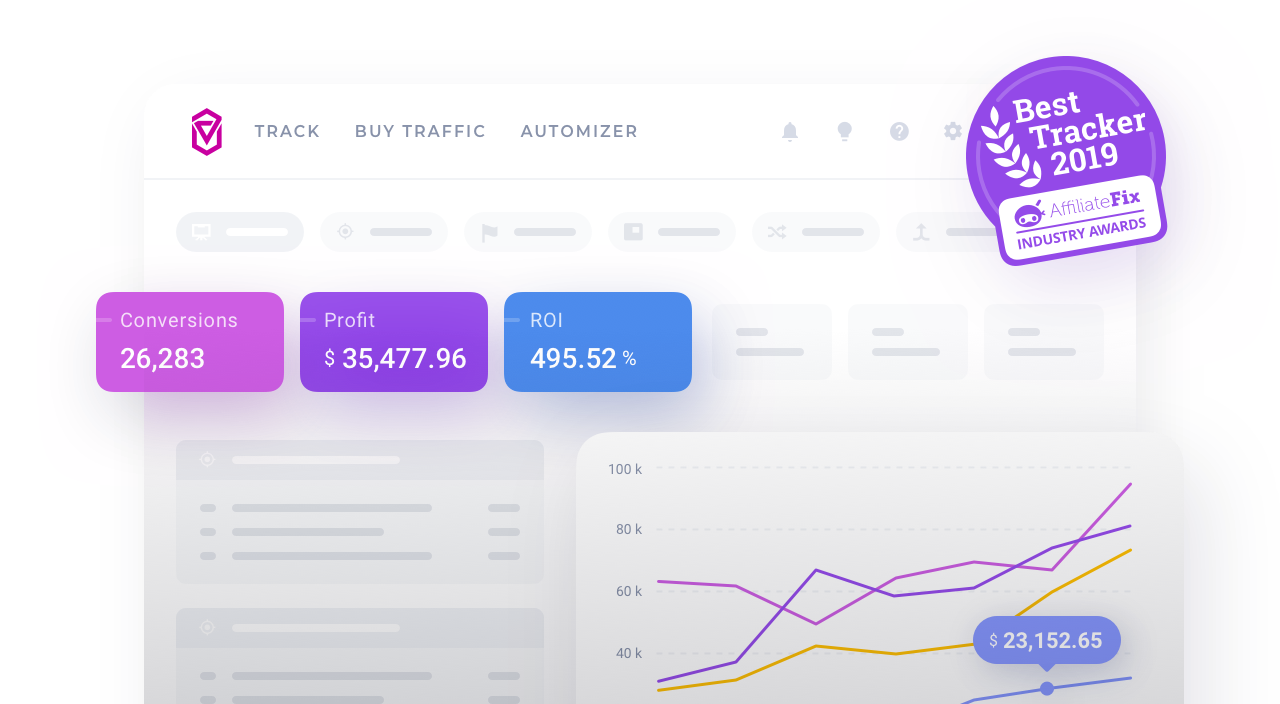Create a Campaign – Part 1: General
The first part of this guide will show how to add basic campaign information:

- In Voluum, go to Campaigns.
-
Click the Create button and select the Campaign Advanced option from the drop-down menu.

- Select the Private Workspace from the drop-down menu that this campaign will be assigned to. To learn more, read the Workspaces: Overview article.
-
(Optional) Select a tag from the Country tag drop-down menu. If the campaign is intended for multiple geos, leave the Global option selected.
Voluum Info: This option only determines which flow templates (including landers and offers) will be available to select from the drop-down menu. If you select one country, for example United States, all the flow templates with the United States and Global country label will being displayed during selection.
- Provide a unique and meaningful name for your campaign in the Campaign name text field. The name of the campaign in Voluum is based on the following pattern: {selected_traffic_source} - {country_label or Global} - {your_unique_custom_name}. You can use emojis in your campaign name: simply right-click on the Campaign name text field and select Emojis option from the menu.
- From the Traffic source drop-down menu select a traffic source that you have previously created. The traffic source's name will be automatically added as a prefix to the campaign's name.
- (Optional) Select a Traffic type from the drop-down menu to organize your campaigns more efficiently. Traffic type is a property of a visit (or also an impression, if you track it), and you can use it to group traffic in reports later. If you change traffic type for a campaign, the change will affect only traffic recorded after the change.
- Select one of the
Cost model radio buttons. If you have selected to track costs with one of the four cost models (CPC, CPM, CPA, RevShare), provide also the cost value in the Cost value text field. To learn more about tracking costs, read the Track Costs article. - Select a tracking method for the first transition. This is the method that will be used to track a visitor from an ad to a Voluum campaign funnel (a landing page or offer). Note that you can select a different tracking method for the second transition in the next tab.
- (Optional) The Conversion reporting to traffic source option can be used if you want to override your traffic source postback URL or redirect pixel settings. This override gives you an option to differentiate between conversion types when firing back information about conversion to your traffic source platform. Read the Custom Traffic Source Postback URLs article to learn more.
- (Optional) To enhance search functionality, you can always add tags to the campaign defined by you. Keep in mind that tags can only contain letters, numbers, and underscores.
- (Optional) You can add notes to your campaign regarding its content or goals.
-
You have provided all basic information for your campaign. Now, you are going to define the campaign's destination click the Next button to go to the Destination tab.

Frequently Asked Questions
Have more questions about creating the campaign at this point? You might find the answer below:
What is the advantage of using the Cost model option?
The Cost model options enable you to track your campaign traffic costs using different cost models. Select the appropriate cost model and enter the amount based on your traffic spend. You can track the campaign cost on your campaign reports afterward.
Below you can find a breakdown of the different models you can choose from:
CPC , Cost per click: This option lets you enter the cost per click. It is calculated using the number of visits to the campaign URL multiplied by the CPC cost value.CPA , Cost per acquisition: This allows you to enter the cost per conversion. It is calculated as the number of conversions multiplied by a defined CPA cost value. To learn more about it, go to the Tracking Costs article.- RevShare, Revenue Share: The percentage fraction of the offer's payout that is taken as the conversion cost in the traffic source. To learn more about it, go to the Tracking Costs article.
CPM , Cost per mille / Cost per thousand: The cost is based on dividing the value of the bid by every 1,000 impressions generated by an ad. To learn more about it, go to the Tracking Impressions in Voluum article.- Auto: This feature enables you to automatically track the click / visitor cost. It is only available if the traffic source supports the Cost advanced setting: Parameter and Placeholder. To find out more, read one of the articles: Add a Traffic Source to Voluum from a Template or Add a Custom Traffic Source to Voluum.
Should I set up settings in the Conversion reporting to traffic source section?
You should only use it if you need to adjust the traffic source URLs for a given campaign. When you set the settings for the traffic source element in Voluum, you already choose how you want to fire conversions back to your traffic source. However, those are the global settings for the traffic source. If you need to adjust them for the particular campaign, you can provide those changes in the Conversion reporting to traffic source for the campaign section. When to do that?
For example, the traffic source might have different options of the URL (postback URL or pixel redirect URL) for different types of offers within the campaign. The offers placed in banners might require one type of the URL, all others - a different one. When you create a campaign, you create it for a specific type of offer, therefore you should adjust the traffic source URL accordingly.


